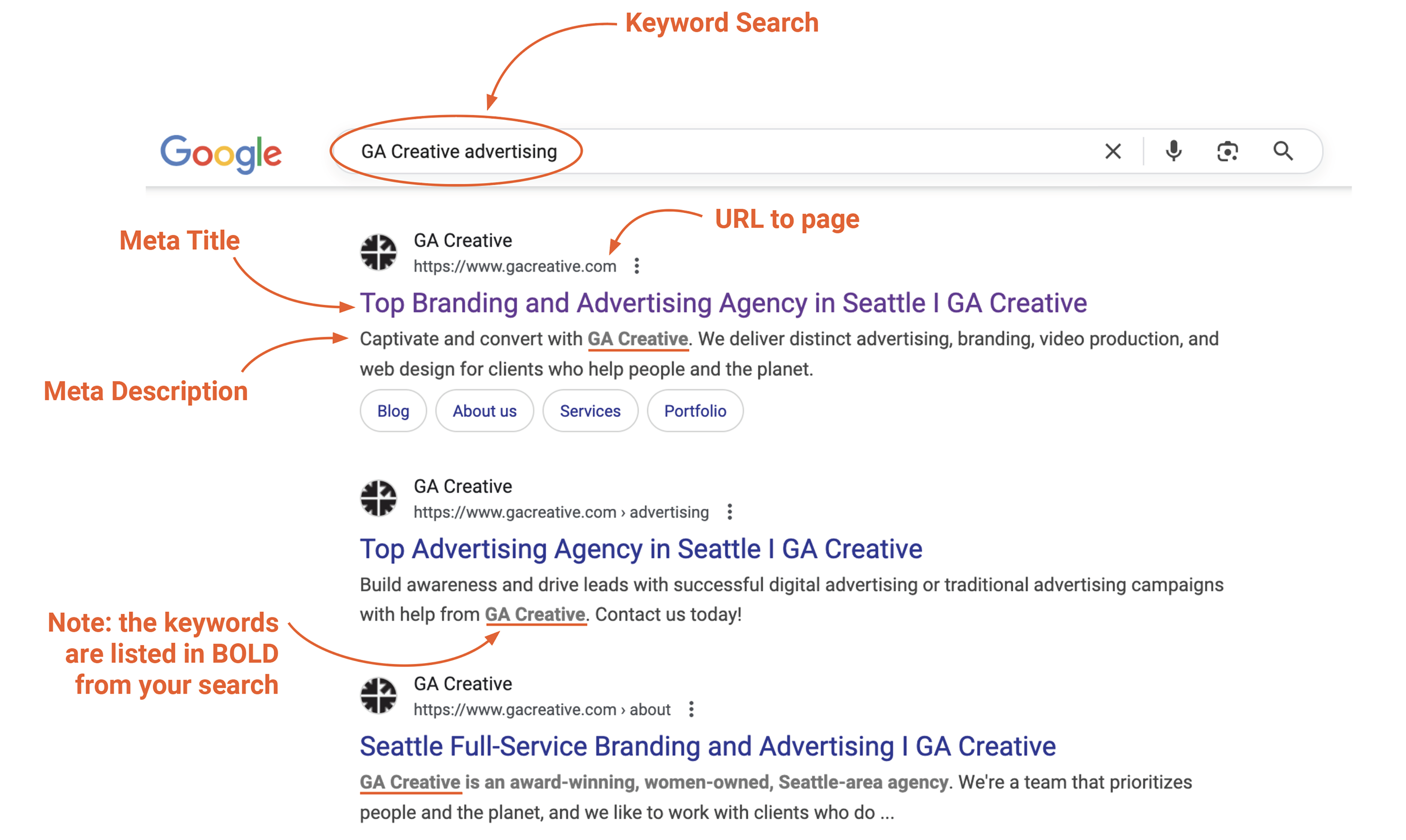Why metadata is critical to marketing strategy

Metadata acts as a first impression for your audience online as it directly impacts your website’s search engine optimization (SEO). Search engines like Google use meta data to determine the relevance of your page to a user’s query, making it an essential factor in improving your rankings and visibility.
A compelling, well-crafted meta description can entice readers to click, increasing organic traffic to your website or blog. Neglecting this aspect can lead to lost opportunities, as vague or poorly written metadata often fails to capture attention. Take the time to optimize metadata to ensure your website stands out and your organic efforts are doing their part to supplement any paid marketing efforts.
When users conduct a search, they encounter your meta title and description before visiting your page.

Metadata refers to information about a webpage that helps search engines and users understand its content. It includes elements like meta titles, meta descriptions, and keywords, which play a significant role in SEO and improving click-through rates.
The meta title is the clickable headline that appears on search engine results pages (SERPs). It gives users a quick idea of what the page is about and helps search engines rank your page against relevant queries. A good meta title is concise (no more than 60 characters), descriptive, includes relevant keywords, and is in first case caps.
The meta description is a short summary that appears below the meta title on SERPs. It provides a brief overview of the page content, encouraging users to click. Though it doesn’t directly affect rankings, a well-written meta description improves click-through rates by giving users a reason to visit your page. It’s important to keep these under 155 characters with spaces to prevent copy from being truncated.
How you add metadata to your website depends on what platform you use, whether creating custom HTML or a CMS platform like Wix, Squarespace, Webflow, or WordPress. Here are general instructions for how to add meta data to your website.
HTML websites
CMS platforms
WordPress sites
Here are three reminders:
Optimizing meta titles and descriptions ensures your page stands out in search results while improving user engagement!
Keywords play a crucial role in improving the visibility of your blog. By incorporating relevant, high-ranking keywords into your meta descriptions, you can align your content with users' search queries, increasing the likelihood of your page appearing higher in search engine results. However, it's essential to strike a balance—overloading your meta description with keywords can come across as spammy and may deter readers. Instead, focus on naturally integrating keywords into a concise and engaging description that highlights the value your content provides. This approach not only supports SEO but also builds trust and interest among your target audience.
Using keywords effectively in your metadata can significantly enhance both your SEO and your click-through rates. Many users rely on brief headlines when deciding whether to click, which makes it important to have clear and engaging metadata.
Here are three tips to get it right:
Metadata isn’t just for search engines, it’s also a valuable tool for your users. When your meta title and description accurately reflect your content, users are more likely to visit your site and stay longer. Clear metadata sets the right expectations, helping to attract genuinely interested readers, reduce bounce rates, and increase time spent on your website. This alignment improves the user experience and signals quality to search engines as well.
Chances are, your website has pages with missing, weak, or outdated metadata. Fortunately, there are tools that make it easy to find and fix these issues. Many popular SEO platforms have tools that can help you identify pages without meta titles or descriptions, spot keyword gaps, and improve underperforming metadata based on real performance data.